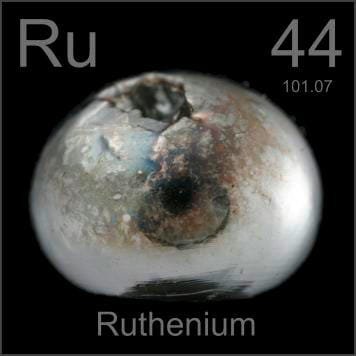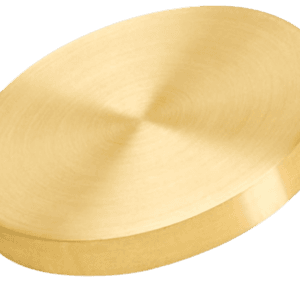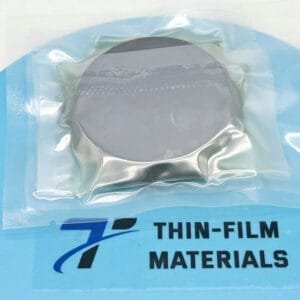Platinum Ruthenium Sputtering Target Description
 Platinum is a dense, malleable, and ductile metal, prized for its unreactive nature and silverish-white appearance. The name “platinum” comes from the Spanish term “platino,” meaning “little silver.” Among the six metals in its group—platinum (Pt), palladium (Pd), osmium (Os), iridium (Ir), rhodium (Rh), and ruthenium (Ru)—platinum stands out as the most significant. It remains unaffected by oxygen and water and can only be dissolved in aqua regia or fused alkalis. Platinum’s most notable commercial use is in catalytic converters for vehicles.
Platinum is a dense, malleable, and ductile metal, prized for its unreactive nature and silverish-white appearance. The name “platinum” comes from the Spanish term “platino,” meaning “little silver.” Among the six metals in its group—platinum (Pt), palladium (Pd), osmium (Os), iridium (Ir), rhodium (Rh), and ruthenium (Ru)—platinum stands out as the most significant. It remains unaffected by oxygen and water and can only be dissolved in aqua regia or fused alkalis. Platinum’s most notable commercial use is in catalytic converters for vehicles.
 Ruthenium is a chemical element named after Russia, known by its Latin name “Ruthenia.” It was first mentioned and observed by J. Sniadecki in 1807, who also accomplished its isolation. The chemical symbol for ruthenium is “Ru.” It has an atomic number of 44 and is located in Period 5 and Group 8 of the periodic table, belonging to the d-block. The relative atomic mass of ruthenium is 101.07(2) Dalton, with the number in parentheses indicating the uncertainty.
Ruthenium is a chemical element named after Russia, known by its Latin name “Ruthenia.” It was first mentioned and observed by J. Sniadecki in 1807, who also accomplished its isolation. The chemical symbol for ruthenium is “Ru.” It has an atomic number of 44 and is located in Period 5 and Group 8 of the periodic table, belonging to the d-block. The relative atomic mass of ruthenium is 101.07(2) Dalton, with the number in parentheses indicating the uncertainty.
Related Products: Platinum Sputtering Target, Ruthenium Sputtering Target.
Platinum Ruthenium Sputtering Target Specifications
| Material Type | Platinum Ruthenium |
| Symbol | Pt/Ru |
| Color/Appearance | Black Solid |
| Melting Point | / |
| Density | / |
| Available Sizes | Dia.: 2.0″, 3.0″, 4.0″, 5.0″, 6.0″ Thick: 0.125″, 0.250″ |
We also offer other customized shapes and sizes of the sputtering targets; please Contact Us for more information.
Platinum Ruthenium Sputtering Target Application
Platinum Ruthenium Sputtering Targets are utilized in a variety of applications including thin film deposition, decoration, semiconductors, displays, LEDs, photovoltaic devices, functional coatings, optical information storage, glass coatings for car and architectural glass, and optical communication.
Platinum Ruthenium Sputtering Target Packing
Our Platinum Ruthenium Sputtering Targets are meticulously tagged and labeled externally to guarantee efficient identification and quality control. We take exceptional care to prevent any potential damage during storage or transportation.





Reviews
There are no reviews yet.